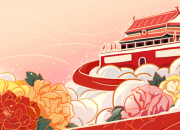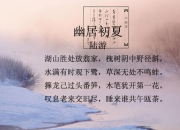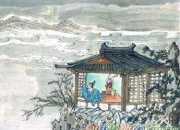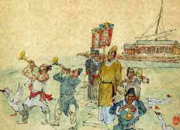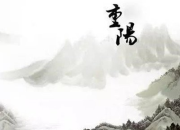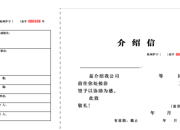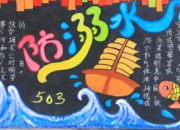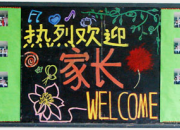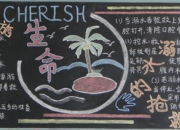英文导游词幽默
时间:2021-08-31英文导游词幽默
作为一个优秀的`导游,我们需要会将英语,大家看看下面的英文导游词,一起阅读吧!
英文导游词幽默1
yuexu park is considered to be one of the central parks in guangzhou city; recently it has been nominated as the scenic park of guangzhou. there are only eight certified scenic parks in guangzhou.
it acts as a natural defense in the northern part of the guangzhou city together with bai yun mountain. with height of more than 7000m above sea level, it is also historically known as yue (guangdong) xiu mountain, yue wang mountain. during the ming dynasty, in the reign of yong le, guan yin temple was built on this mountain hence it is also called guan yin mountain.
during the early west han dynasty, yue xu mountain was known to offer pilgrimage to many people, but then in the early 20th century, dr sun yat sen, suggested that yue xu should be turned into a grand park which was only realized after the liberation of china in 1949.
now, yuexu park is known for providing immense and comprehensive cultural recreation. it consists of one main hill, yue jin gang, 7 small hills guihua gang, muhe gang, yu gang, etc. and baixiu, nanxiu, dongxiu artificial lake. its total area is 860,000 sqm. its afforestation rate is at 92%. it is also a host to famous historical architectural site like zhen hai building, ming gu wall, square cannon site, dr, sun yat sen's monument etc. historical sites and ancient trees were also built and planted respectively around wu yang temple, hall of chinese idioms, a place of relaxation with trees, and bamboos, garden of flowers, art gallery, museum, recreational area, swimming pool, playground, restaurants, kiosk, states, building and pavilion etc. for people to rest and relax, making it a pleasurable experience to visit the park. the park also provides other amenities, to complete the wonderful experience, for visitors. there are many pathways for people to use to visit the places within the park. every year it also hosts a flower market festival. about more than 10 million people comprising of foreigners and locals visit this park every year,since the yuan dynasty, yue xu mountain is considered to be a good scenic park in guangzhou. recently it also has been nominated as one of the ten best scenic parks. its zhen hai building and five ram statues are nominated for the ten best scenic sites.
英文导游词幽默2
Located at the center of the mainlands coastline, Shanghai has long been a major hub of communications, transportation, and international exchange. The municipality covers an area of 6,341 square kilometers and has a population of more than 13.5 million. Shanghai is Chinas largest economic comprehensive industrial base, and a famous historical and cultural city.
The city consistently attracts investment and is seen as an ideal venue for business gatherings. It is also a must on any agenda during a tour of China. Shanghai has fostered a comprehensive transportation network that incorporates land, sea, and air travel, as well as a convenient urban transportation system. More than 300 airlines serve the city, proving direct flights to more than 20 countries and regions. The addition of the Shanghai Pudong International Airport, which went into operation in 1999, is expected to increase the annual passenger volume to some 20 million.
Special tourist trains running between Shanghai and the neighboring provinces of Jiangsu and Zhejiang, as well as tourist bus routes along newly-constructed expressways, offer great convenience for regional travel. Shanghai has more than 400 travel agencies to assist visitors, and the 127 star-rated hotels offer a total of 40, 000 guest rooms.
Visitors to Shanghai are not only dazzled by the modern metropolis and gateway to a developing China, but are also able to immerse themselves in the unique Shanghai culture, a combination of Chinese and Western elements. Colorful festivals and celebrations dot the yearly Shanghai activities calendar, such as the Shanghai Nanhui Peach Blossoms Festival, Shanghai International Tea Culture Festival and Shanghai China International Art Festival.
Shanghai has also introduced special tour packages aimed at the different interests of visitors, such as bicycling tours, hiking tours, gourmet tours, rehabilitation and health care tours, study tours, Japanese young womens tours, honey moon tours, and convention and exhibition tours.
The well-known Bund is a must for visitors to Shanghai. Fifty-two buildings lining the narrow shoreline of the Huangpu River offer a living exhibition of Gothic, Baroque, Roman, Classic Revival and Renaissance architectural styles, as well as combinations of Chinese and Western styles. They are also a condensation of the recent history of the city. The wide embankment offers ample room for strolling and is used by locals for morning exercises and evening gatherings. In the evening, colorful lights illuminate the area and create a shimmering image deserving of the name Pearl of the Orient.
The Yu Gardens are a classical landscape in the Southern Chinese style with a history of more than 400 years. Pavilions, halls, rockeries and ponds display the finest in landscaping from the Southern style as seen in the Ming and Qing dynasties. More than 40 landscapes were ingeniously separated by latticed walls, winding corridors, and lattice windows.
Peoples Square has become the political and cultural center in Shanghai since 1994, when it was rebuilt. In and around the square are a massive fountain named the Light of Huangpu River, 10,000 square meters of lawns, six groups of relief carvings that depict the history of Shanghai, the New Shanghai Museum, the offices of the municipal government, an underground shopping plaza, the Shanghai Grand Theater and the Shanghai Exhibition Center
The Orient Pearl TV Tower
The Orient Pearl TV Tower is 468 meters high, the tallest in Asia and third tallest in the world. It faces the Bund across the Huangpu River. When viewed from the Bund, the tower and the Nanpu and Yangpu bridges create a vivid imagery known as two dragons playing with a pearl. The sphere at the top has a diameter of 45 meters and is 263 meters above ground. The observation deck in the sphere offers a sweeping view of the city. The revolving restaurant is set at 267 meters above Pudong New Area. The dance ball, piano bar and 20 karaoke rooms, at 271 meters, are also opened to the public. The penthouse, which sits at 350 meters, has an observation deck, meeting room, and coffee shop. The tower integrates broadcasting technologies with sightseeing, catering, shopping, amusement, and accommodations. It has become the symbol of the city and a major tourist attraction in Shanghai.
Cruise on the Huangpu River
Cruising on the Huangpu River, visitors can gaze at the mighty skyscrapers, the Monument Tower to the Peoples Heroes, the famous Waibaidu Bridge and Huangpu Park on one bank, and the Orient Pearl TV Tower, International Convertion Center, Jin Mao Building and the newly rising Pudong New Area on the other. The Yangpu and Nanpu bridges span the river. From the river, visitors can also view the ruins of ancient cannon emplacements and fortifications at Wusong and the magnificent view of the Yangtze River as it empties into the sea.
Nanjing Road East, honored as Chinas No. l Street, has become an all-weather pedestrian arcade. Shops and restaurants provide products and services with their own characteristics, making it an ideal place that integrates shopping, restaurants, amusement and sightseeing.
The museum and tomb are located in Lu Xun Park. LU Xun was an imminent man of letters. The museum exhibits Lu Xuns manuscripts, some of his personal effects, document., and photos. The headstone at the Tomb of Lu Xun is in the calligraphy of Vhio Zedong and reads The Tomb of Mr. Lu Xun.
Dr. Suns Residence
Dr. Sun Yat-sen, the forerunner of the Chinese democratic revolution, and his wilr Soong Ching Ling, lived in this building from 1918 to 1924. It was in the residence that Dr. Sun Yat-sen met representatives of the Communist Party and fostered the first cooperation between the Chinese Communist Party and the Kuomintang.
Soong Ching Lings Residence
This is the former residence of Soong Ching Ling. an honorary chairwoman of the Peoples Republic of China and the widow of Sun Yat-sen. She lived, worked, and studied here during the last years of her life.
Birthplace of the Communist Party of China.
In July of 1921, the First National Communist Party Congress was held in this building. The congress passed the Partys program and resolutions, elected the central committee, and declared the founding of the CPC.
Shanghai Library
The new Shanghai Library, which covers an area of some 80,000 square meters, has a collection of 13 million books and is considered one of the top ten libraries in the world. The library incorporates the open-stacks approach favored in the West, which allows for convenience in borrowing books.
Shanghai Grand Theater
Located in the northwestern corner of Peoples Square. the Shanghai Grand Theater covers 70,000 squat, meters. It is actually composed of three theaters. The theaters can accommodate performances of ballet opera, symphonies, chamber music modern dramas, and musicals. The theater also owns the largest, fully automatic stage in Asia. The theater has become a symbol of modern culture in Shanghai.
Cultural Celebrities Street, located along Duolun Road and surrounding areas,is a living memorial to the modern cultural celebrities of Shang-hai and is also a condensation of modern culture. Such Chinese literary giants as Lu Xun, Mao Dun, Guo Moruo and Ye Shengtao lived and wrote here,making the road an important feature in Chinas modern cultural history. In addition, the famous Gongfei Cafe. Celebrities Mansion, the Shanghai Art Opera Troupe, and Hai Shang Jiu Li also display the accumulated cultural atmosphere of Duolun Road today.

